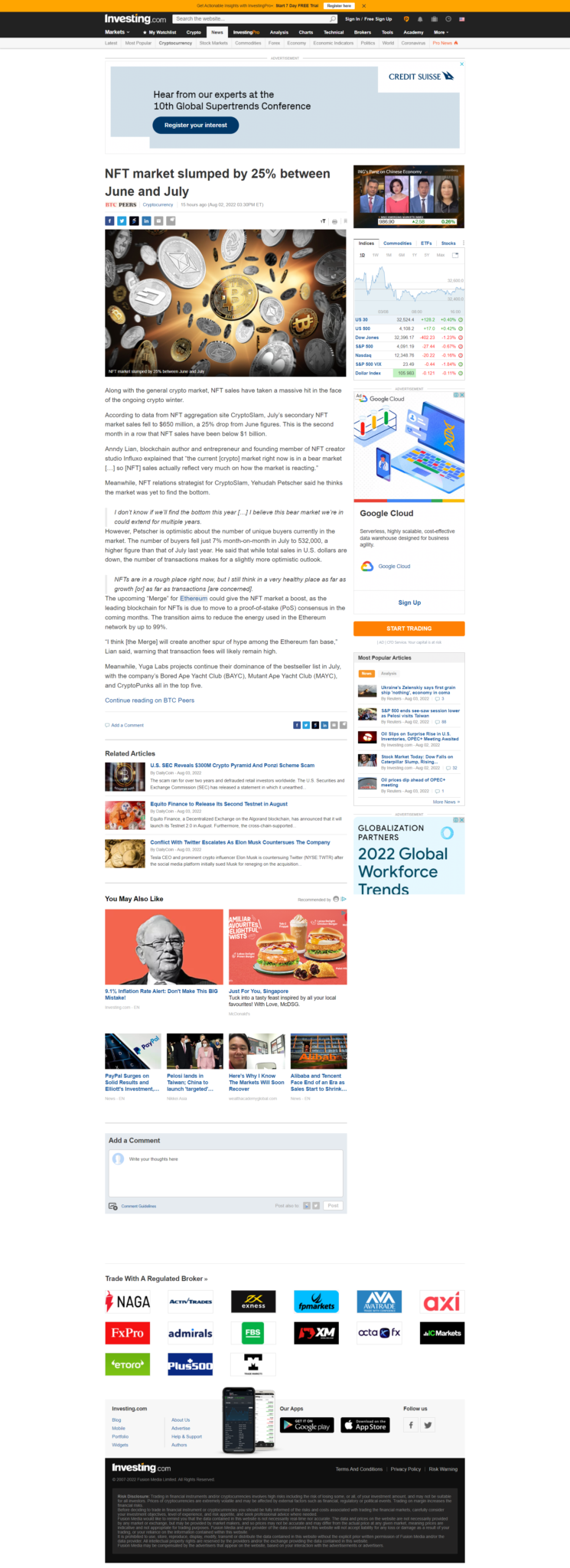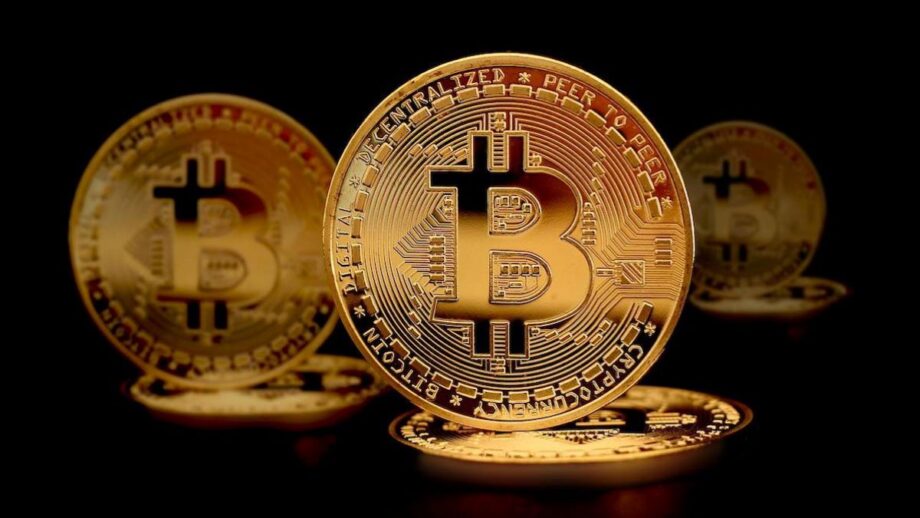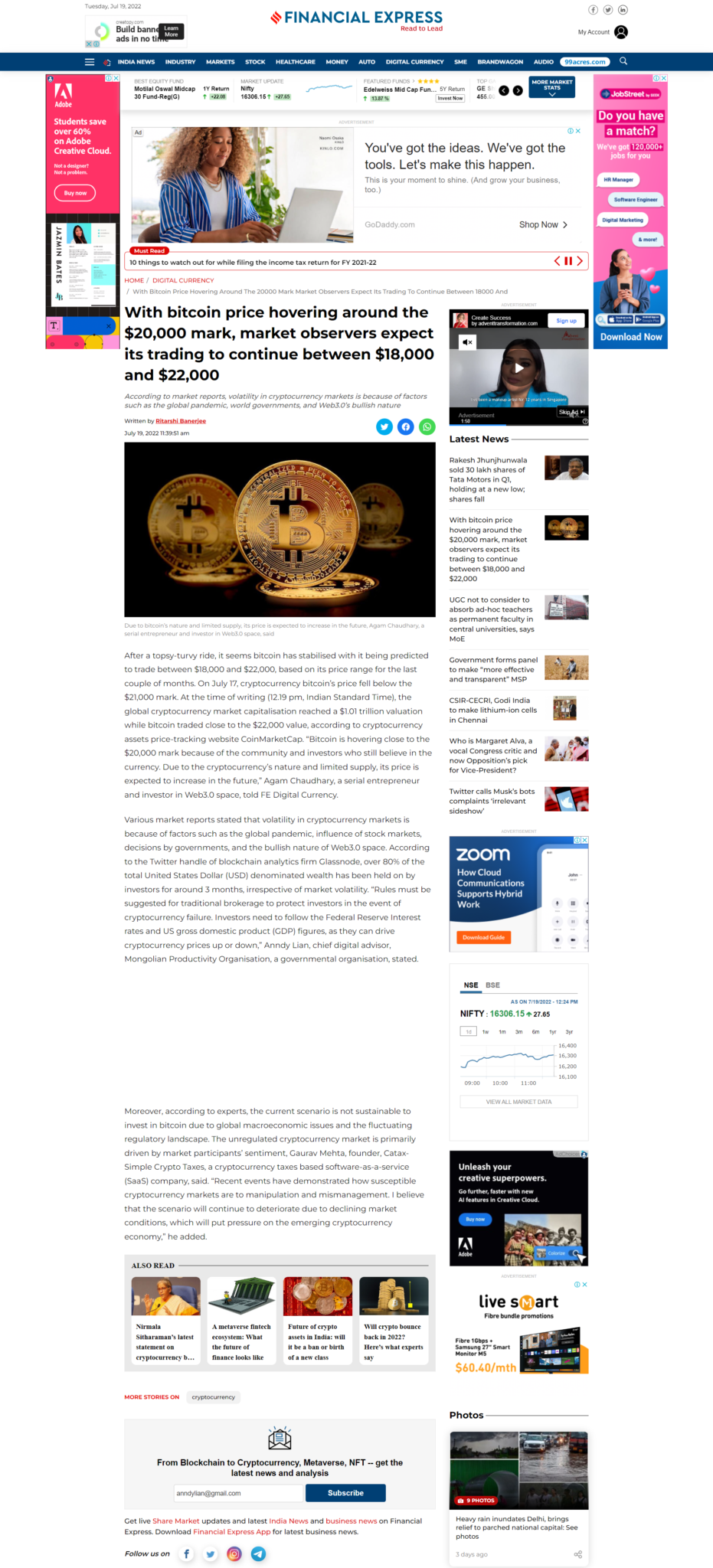While crypto is in a bear market the one sector that has weathered the storm relatively well is NFTs. A new report estimates the global NFT market will be worth $231 billion by 2030, growing at a compounded growth rate of 33.7% over the next eight years. However, this quarter the NFT market has been on somewhat of a roller-coaster ride, though in terms of trading volume and sales compared to Q2 of 2021 they are up by 533% and 59% respectively. In addition, metaverse NFTs also had a good quarter, with the trading volume for ETH-based collections has increased by 101%, while Polygon collections have unfortunately declined by 26%. Overall, it has been a growth of 96%, according to DappRadar.
If that positive trend whets your appetite to get involved in NFTs trading, then you’re not alone. The recent crypto bull market was like an electromagnet for investors who flocked to NFTs. Either to try to get in early by getting whitelisted on a project and then sell once the particular project went live, or purchasing them from another user before selling them on one of the growing number of marketplaces. As reported in late 2021 by leading crypto analytics firm Chainalysis, “NFTs are far from a surefire investment” however: “Transaction data from the OpenSea marketplace shows that just 28.5% of NFTs purchased during minting and then sold on the platform result in a profit. Buying NFTs on the secondary market from other users and flipping them, however, leads to profit 65.1%of the time.” In plain English what this means is that your average NFT buyer is likely to be out of luck when it comes to turning a profit on a newly minted or a secondary market NFT trade.
If those headline figures haven’t put you off, what can help you can see the wood for the trees when it comes to trading NFTs? A little context might help for starters; namely the commercial pressure from the bear market and the competition between NFT marketplaces mean this could be a good time to up your NFT trading game.
What hasn’t changed is the fact that most NFTs are released in collections. A collection is a group of NFTs that are all different but share some characteristics. Bored Ape, the most popular NFT collection, has a total sales value of approximately $2.5 billion. While the top ten NFT collections had over $15 billion in trading value in 2021, accounting for roughly 60% of the total NFT market. The fact that a few collections dominated a large portion of the market is most likely due to NFT investors’ preference to trade within collections. They do this because it is easier to value an NFT in a collection when there are “similar” NFTs to compare it to. Experienced investors know where the money is, therefore, they trade NFTs within those collections.
These NFT traders speculate and identify a specific collection with liquidity, trade, and keep flipping until they make a profit. The truth is that most speculative traders do not profit from trading NFTs. Information is key, and traders who have information on the collection with liquidity are more likely to make a profit. Instant tradability of non-fungible tokens will lead to higher liquidity. NFT marketplaces can cater to a variety of audiences—from hardcore traders to more novice players—allowing for greater exposure of the assets to a wider pool of buyers. In the same way that the ICO boom of 2017 gave birth to a new asset class driven by instantly liquid tokens, NFTs expand the market for unique digital assets.
Another factor we must consider is fraud in the NFT sector. We’ve seen a lot of bad actors sell and trade NFTs they don’t own or have access to. I believe that it is critical for every NFT trader to conduct their own research to determine the best collection to trade. In simple terms the NFT sector is still growing, and there are still certain gaps to fill.
Market liquidity is still concentrated in a few NFT collections, and a trader must be able to identify those collections where the demand is to make a profit. I am also about to publish an in-depth guide to NFTs in a new book, said I believe the NFT market was only going to get stronger in 2022. “The growth of NFTs on rival platforms to Ethereum such as Solana , and the competition with OpenSea from players ranging from DEX leader Uniswap to e-commerce king eBay, shows how dynamic this sector is. Despite the collapse of the wider crypto market with the Luna Terra collapse, the demand for NFTs shows no stopping. I was struck also by how GameStop’s new marketplace launched just a couple of days ago is already doing well, with ETH in trading volume too.”
Original Source: https://www.benzinga.com/22/08/28375889/why-competition-between-nft-marketplaces-is-good-news


Anndy Lian is an early blockchain adopter and experienced serial entrepreneur who is known for his work in the government sector. He is a best selling book author- “NFT: From Zero to Hero” and “Blockchain Revolution 2030”.
Currently, he is appointed as the Chief Digital Advisor at Mongolia Productivity Organization, championing national digitization. Prior to his current appointments, he was the Chairman of BigONE Exchange, a global top 30 ranked crypto spot exchange and was also the Advisory Board Member for Hyundai DAC, the blockchain arm of South Korea’s largest car manufacturer Hyundai Motor Group. Lian played a pivotal role as the Blockchain Advisor for Asian Productivity Organisation (APO), an intergovernmental organization committed to improving productivity in the Asia-Pacific region.
An avid supporter of incubating start-ups, Anndy has also been a private investor for the past eight years. With a growth investment mindset, Anndy strategically demonstrates this in the companies he chooses to be involved with. He believes that what he is doing through blockchain technology currently will revolutionise and redefine traditional businesses. He also believes that the blockchain industry has to be “redecentralised”.




